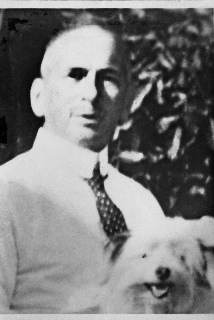Search for Names, Places and Biographies
Already layed Stumbling Stones
Suche
Julius Hirschfeldt * 1864
Hallerstraße 25 (Eimsbüttel, Harvestehude)
HIER WOHNTE
JULIUS HIRSCHFELDT
JG. 1864
GEDEMÜTIGT / ENTRECHTET
FLUCHT IN DEN TOD
4.10.1943
further stumbling stones in Hallerstraße 25:
Clara Joel
Julius Hirschfeldt, b. 7.19.1864 in Hamburg, died by suicide on 10.4.1943 in Hamburg
Hallerstraße 25
The commemorative stone in front of the stately, multi-family house in the modest Wilhelminian style is regularly cleaned by an elderly gentleman. Thomas Wolgast, a well-known radio journalist, is the grandson of Julius Hirschfeldt, who here, in 1943, was "humiliated, disenfranchised,” and driven to take "flight into death,” as testified to by the commemorative stone. Wolgast once lived on the second floor in the old house of his grandparents; now he is on the ground floor. When caring for the stone, passersby often ask about it and are eager to get information about it. Wolgast, to be sure, no longer remembered his grandfather and knew only a little about his life and death. He helped biographers with historical references of the era.
Julius Hirschfeldt was 79 years old when, in early October 1943, he took and overdose of the sleeping tablet "Veronal” and thus ended his life. His wife Theresie Lydie, née Thierfelder, married to him since 1895, was away traveling for a few days. He had probably wanted to spare her his leave-taking. She was "of German blood” and it was to this circumstance that he owed his having escaped deportation and that he was being allowed to remain in his familiar home. However, the specter of a threatening deportation hovered over him. This fate had already overtaken two sisters and two brothers-in-law. Whether he ever heard from them again or whether rumors of the fate of deportees had reached him, we do not know. However, for a near-80 year old, the fear of being transported to a work camp, of degradation, slave labor, and misery were probably grounds enough for him to decide voluntarily to take his own life, as so many other Jews before him had done.
The Hirschfeldt family had been residents of Hamburg for generations. Julius’s father, Louis Hirschfeldt (1821–1893) and grandfather, Jäkel Hirschfeldt, were businessmen, and this was the occupation he also chose. He had not discarded the Mosaic (Jewish) faith of his forbears, but had dissolved his connection to the Jewish Congregation. He attended preparatory school in Wandsbek, received his graduation certificate, and began his professional career as a volunteer in a Hamburg dyewood import firm. Thereafter, he worked at the tanning material import firm Blau and Schindler, rising in 1895 to the position of authorized representative. In 1904, he became a partner in the Carl E. Bonn successor firm (Hamburg Zollenbrücke 3), which also dealt in the export of tanning materials. In 1915, he was called to the Ministry of War in Berlin and there led, until war’s end, the department in charge of procuring leather tanning material needed by the army. This task led him to make official trips to the Balkans, Luxemburg, and Belgium. After the war ended, he returned to his firm, for which his wife served as authorized representative in his absence. In 1931, he became sole owner. Up to and including 1937, he was still making a profit. Then the business came to a standstill: the business was denied a foreign trade license. "Aryanization attempts” foundered. In 1938, the firm was liquidated.
In the same year, Julius Hirschfeldt began transferring his assets to his wife and daughter. Initially, the individual assets were divided between husband and wife. Then Julius gave his stocks and bonds to his daughter Annemarie (b. 1905). Annemarie had married the "German-blooded” Carl Wolgast in 1935. The transfer was declared to be for the most part a retroactive dowry and was sanctioned by the Office of the Chief Financial Authority. In addition, the Hirschfeldt couple agreed upon a separation of goods in February 1943. Upon the contractual division of assets, most of the remaining valuables went to his wife.
Thereby, Julius Hirschfeldt had settled his financial matters and renounced all claims of ownership. He had lost hope for a dignified human existence. A short time later, on 4 October 1943, he took his own life.
Translator: Richard Levy
Kindly supported by the Hermann Reemtsma Stiftung, Hamburg.
Stand: September 2019
© Jürgen Kühling
Quellen: 1; 2; StaH: 231-7 Handelsregister B1955-335,314-15 Oberfinanzpräsident R1939/3054; 331-5 Unnatürliche Todesfälle 1205;351-11 Amt für Wiedergutmachung_1754 Hirschfeldt, Therese; 332-5 Personenstandsregister 8186 645/1943.
Zur Nummerierung häufig genutzter Quellen siehe Link "Recherche und Quellen".


